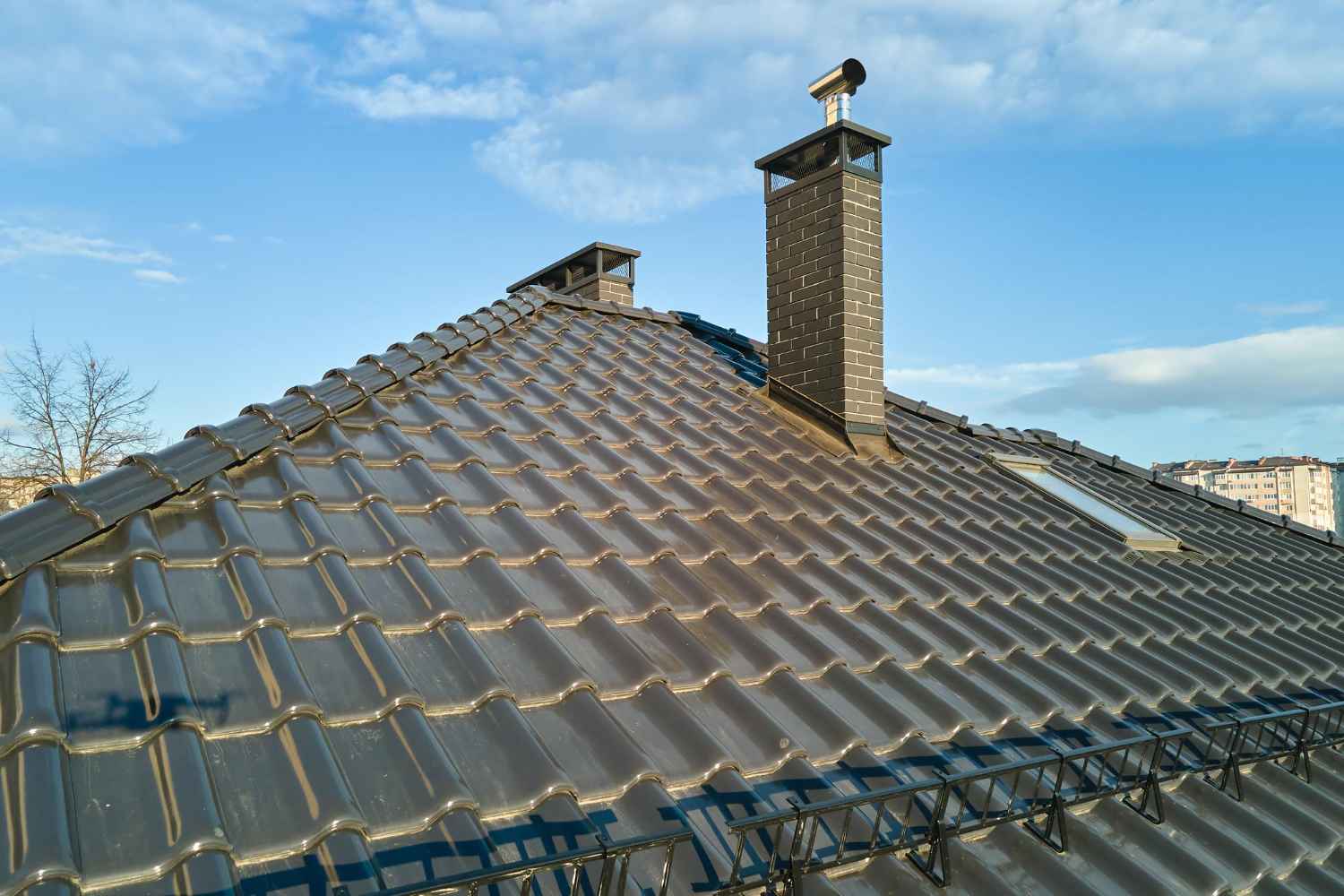Slate roofing has been the gold standard for home aesthetics for many years, combining distinctive beauty with exceptional weather resistance. Today, synthetic slate roofing has firmly established itself as a viable alternative, bringing unique advantages.
When installing a roof, homeowners and builders often have to make an important decision: choosing between synthetic and natural slate roofing. This choice can significantly impact your roof’s aesthetics, durability, and cost. This comprehensive guide will outline the differences between artificial and natural slate roofing, helping you make the best decision for your needs.
What is Natural Slate Roofing?
Natural slate is a metamorphic rock that is being used as a roofing material for centuries. It is recognised for its durability, aesthetic appeal, and versatility in adapting to various architectural styles. Its aesthetics and shingle manufacturers make it an ideal choice for long-lasting and beautiful roofing solutions. The natural slates are mined and cut into square shaped tiles that are installed on your roof one at a time.
What is Synthetic Slate Roof?
A synthetic slate roof consists of man-made materials that mimic the appearance of a natural slate roof. It mimics the appearance of natural slate but comes with some added perks, offering a modern twist on a classic look. It has chisel marks that add the hand-crafted touch to the actual slate modeled from it, ensuring a completely authentic and vibrant look. However, beyond the difference in composition and manufacturing, it is hard to identify the real things from the ground.

Difference Between Natural and Synthetic Slats
Before installing a roof, it’s better to know what kind of roof will suit your property the most. To make an informed choice, discover the differences between each slate and find out which is the best option for your home. Let’s take a look:
Material Composition
Natural Slate Roofing
Natural slate is a fine-grained rock made of sedimentary rocks formed over 500 million years ago. These types of slabs are utilised for roofing and can be split into thin, flat tiles. Each piece of natural slate has unique characteristics based on the specific stone it was sourced from, guaranteeing a genuinely authentic and beautiful roof structure roof.
Synthetic Slate Roofing
It is made up of plastic, rubber, metal, concrete, or recycled materials. These slabs replicate the appearance of natural slate and offer several benefits, such as being easy to install and light in weight.
Aesthetics Appeal
Natural Slate Roofing
The stunning beauty of these slabs provides a timeless and sophisticated appearance that improves the curb appeal of any home. Their vibrant colours and designs can contribute to an eternal beauty of the roof. While natural slate is predominantly blue-grey, it also comes in various other natural colours.
Synthetic Slate Roofing
Synthetic slate is a modeled form of natural slate that gives it a more authentic look and viable appearance. Synthetic slate closely resembles natural slate, although it may not fully replicate the authentic look of natural stone. However, advances in manufacturing techniques offer a wide range of colours and styles, allowing homeowners to find a synthetic slate that enhances the appearance of their homes Cost
Natural Slate Roofing
Natural slate is more expensive than synthetic slate because it’s harder to manufacture. The cost includes the materials and the labour-intensive installation process.
Synthetic Slate Roofing
Synthetic slate is generally more affordable than natural slate but does not add much aesthetic appeal as compared to natural stone. It balances aesthetics and cost-effectiveness. Due to its easy-to-install nature, synthetic slate has low labor costs, contributing to cost savings.

Durability
Natural Slate Roofing
These slates are renowned for their exceptional durability. When adequately maintained, natural slate can last for decades. It is resistant to fire, external elements, insects, fungi, and microorganisms. Their durable nature enables them to endure heavy rains, snowfall, and fire..
Synthetic Slate Roofing
Synthetic slate can withstand extreme weather conditions, but it may need to be replaced after two to three decades as compared to natural slate that is stronger, more weather resistant, and can last for over 100 years.
Weight & Structure
Natural Slate Roofing
Natural slate is suitable is suitable for installation on roofs with a pitch of at least 25 degrees. Slate with more than 20% calcium carbonate may lighten in color and compromise quality.
Synthetic Slate Roofing
This synthetic slate is made from plastic, rubber, metal, concrete, or recycled materials. It is comparatively lighter in weight, which makes it easy to install.

Installation & Maintenance
Natural Slate Roofing
Natural slate needs a little to no maintenance and has 150 years of expected lifespan. It is also an effective roofing material for reducing noise pollution. Moreover, slate is fitted to a roof with nails and pegs, so holes need to be punched into it before installation.
Synthetic Slate Roofing
Synthetic slate requires more maintenance than natural slate and is comparatively less sustainable. It needs regular inspections and occasional cleaning.

